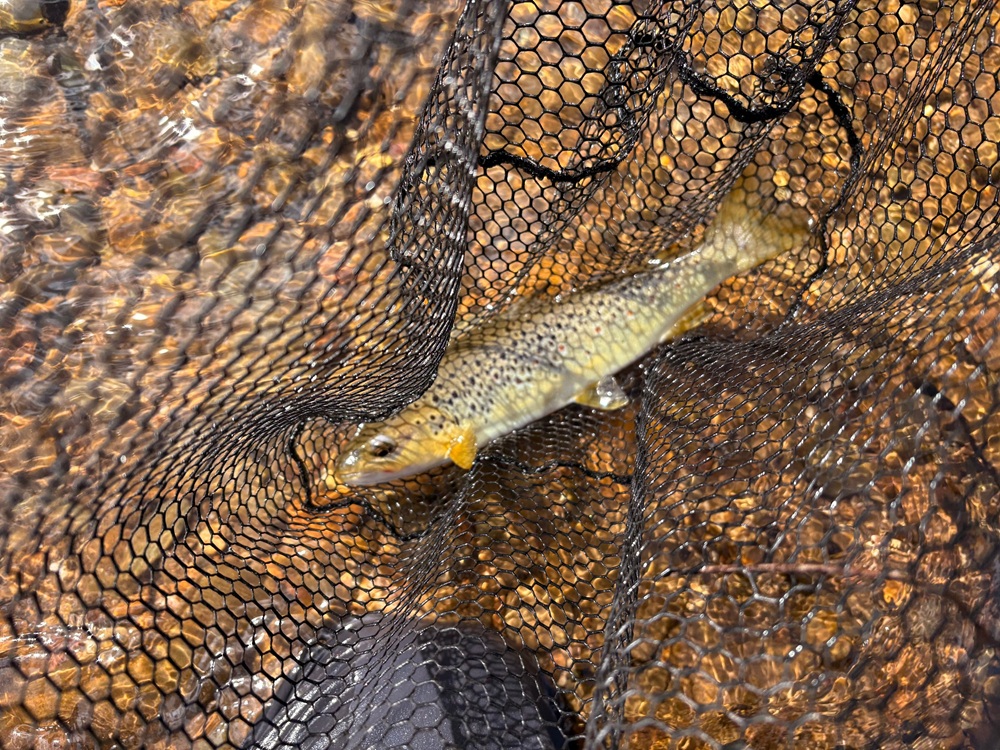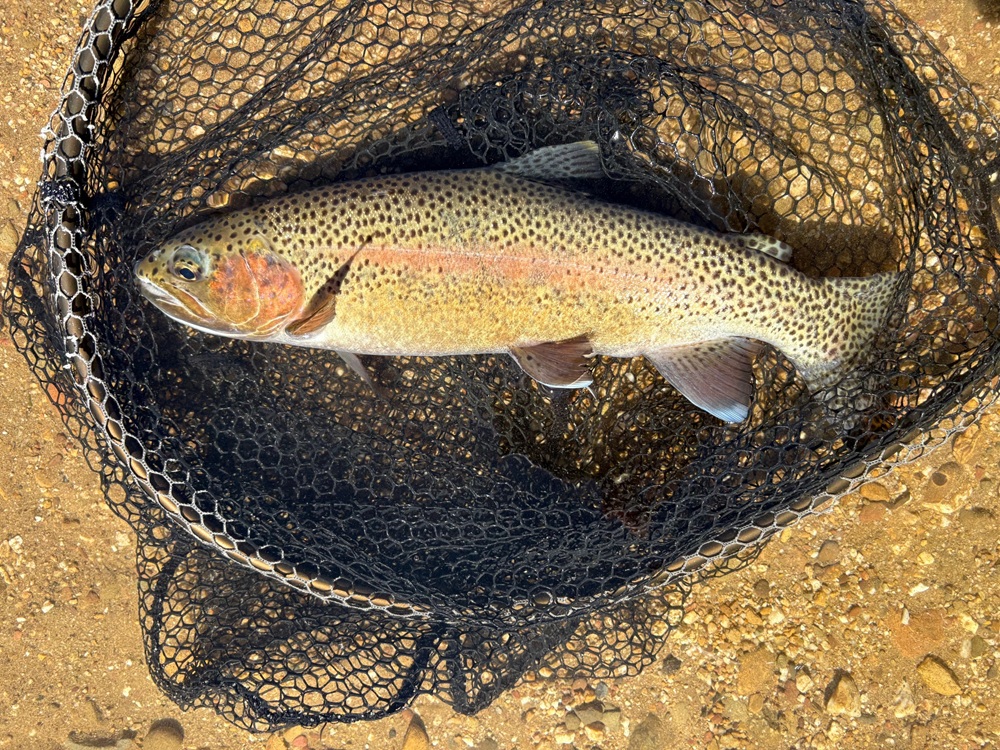
Early season Ovens brownie.
The first weeks of open season around Bright in Victoria’s north-east were of course impacted by the tragic shooting incident and subsequent manhunt in the region. Some areas were off limits or virtually so. Heading deep into the Buckland, Buffalo or Ovens for a bit of bush-bashing wasn’t really an option. It was much more sensible to stay safe and close to the towns. Luckily, there is plenty of great water around the townships, so at least for the opening, there remained lots of choice.
The river level of the Ovens River did not look too high. It was at a depth that could be easily waded along the banks. But that was somewhat deceptive, as the rivers create a big push to pump the snowmelt off the mountains. I recently learned at a Climate Risk modelling event that rivers are called ‘arteries of flood risk’. That puts another perspective on our beloved rivers, and those boffins who were so rudely referring to what we think of as ‘arteries of joy’ were definitely not flyfishers (I checked!).
As last season wasn’t exactly the best, I had this idea to walk up to the best run in Bright, and take an instant measure of what the new season would hold. No fish: bad. One or two: tough. More than a couple: not so bad. A dirty dozen: happy days. We all have our mental model of what good or bad looks like, I guess! I had rigged up the trusty Czech with the favourite combination of Squirrel (point) and Perdigon (dropper). What was the result going to be?
Before I wade in, I always put a few drifts through the shallower water in front of me. You never know what you could have stepped on! The line tightened on the first cast, and a foot long brown trout jumped and ran. Hello to the new season! It liked my orange beaded Squirrel so much, I had to you use my pliers to remove the barbless hook from its mouth. A gentle release of fish numero uno. Nice work. But what do we know from days where we catch a fish on the first cast?

Indeed, careful wading and nymphing of the run produced only one more small rainbow, and a redfin. That last one was a first for me up this way. Anyway, the first measure was that fishing may not be too bad. That’s when the sun went down, I finished up, walked into town, and had a great dinner with some locally distilled spirits to finish. Welcome back to the north-east!
The next few days I had to go out to scientifically test if my sampling of the first night was ‘indicative’. It held up pretty well, and I’d describe the fishing overall as pretty good. You had to work hard for each fish, which is perhaps something we forgot during the really good years. The browns are of exceptional quality, and as for the rainbows, apart from one decent-sized one, it was good to see lots of smaller models back on station. No more redfin were caught, so maybe that one was an outlier.
On my walk back home, I couldn't help but fish a mint-looking spot right in the centre of Bright. I was glad I did. The line tightened, and after a long run, the rainbow of the trip leapt in the blue spring sky.

Best rainbow.
This wasn't just to the delight of myself, but also a small audience which had started to gather. As I netted the trout, I kept it in view so it could become 'Insta-famous' on a whole bunch of accounts around the world. Just as I was releasing the fish, a young guy said, "Hey, looks like you're a bit of an old hand at this!" It was like being called "Sir" at work, or when someone stands up on a train to give you a seat. Seriously?!
Back home, this 'oId hand' opened the nymph box. These days I have a habit: a) tie with my box wide open, and b) repair broken flies immediately.
Tying with the box wide open may also be the title of a fly-tying book I’ll never publish, but the concept is simple. Only when you have the box open will you see the gaps in your arsenal, and you can spend your limited time tying flies you really, truly need. I have sorted my nymphs now by size of bead only, colour being secondary. That worked, as I had to adjust weight a lot during the sessions to get the right drifts, and get those flies down as fast as needed, but not faster.
Repairing broken flies is a nice nod to sustainability as it reduces waste. I do make a practice to ‘tie back with bling’, meaning that any broken fly needs something special to set it apart from the other flies in the box. That way I can stay creative, reuse flies and materials, and get the variety I need to deal with whatever these ‘arteries of flood risk’ require.
Keep safe and happy all… and be careful wading in those new season flows!











